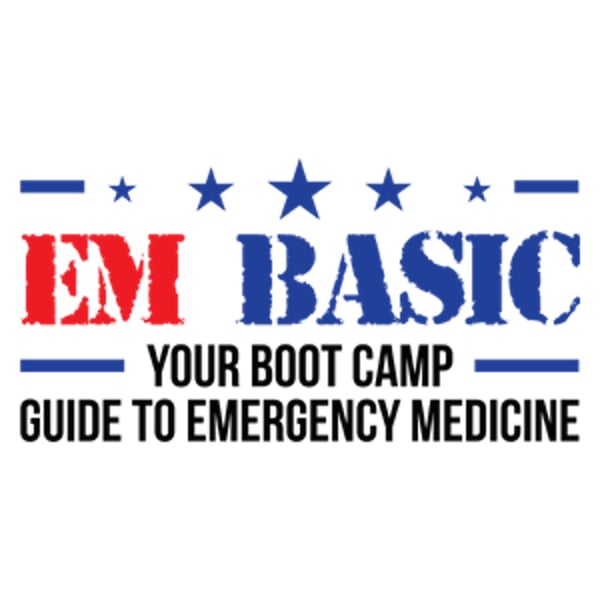94 Pediatric Sepsis
EM Basic
EM Basic LLC
4.6 • 665 Ratings
🗓️ 27 July 2020
⏱️ 36 minutes
🧾️ Download transcript
Summary
Join doctors Smitha Mathew, Kaitlin Verdone, Zac Hodges, and Dan McCollum as they navigate the difficult waters of pediatric sepsis. What exactly is sepsis? Are there any differences in the treatment of pediatric sepsis compared to adult sepsis? What should I do if I see a septic child at a small community Emergency Department? We discuss this and more in this episode!
Transcript
Click on a timestamp to play from that location
| 0:00.0 | Hi everyone and welcome back to another episode of E.M. Basic. I'm Zach Hodges, a pediatric |
| 0:04.8 | resident here at the Medical College of Georgia. Today we'll be discussing pediatric |
| 0:08.9 | sepsis and I'm excited that we are joined by guests from both the pediatric intensive care |
| 0:12.9 | and emergency medicine. Do each of you all want to go around and introduce yourself and tell us a |
| 0:17.1 | little bit about your educational background? Hello everyone. My name is Smith and Matthew, |
| 0:21.5 | and I am a pediatric intensiveist. Hi, everyone. I'm Katie Verdone, and I'm a pediatric ICU fellow here |
| 0:27.4 | at the Children's Hospital of Georgia. And I'm Dan McCollum from Emergency Medicine. Let's get started with |
| 0:32.5 | a case. Our patient is a nine-month-old infant brought to a community emergency department with a one-day |
| 0:37.9 | history of fever and decrease oral intake. Mom noticed worsening irritability, one episode of |
| 0:43.1 | vomiting, and later increased worker breathing, and decreased alertness that calls her to come |
| 0:47.3 | to the ED. On arrival, the triage nurse recognized the child was ill and brought her |
| 0:52.0 | immediately to the resuscitation room. |
| 0:56.8 | Smitha, how would you start the evaluation of this infant? |
| 1:01.7 | When examining an acutely ill infant, I start with a pediatric assessment triangle. |
| 1:07.4 | Remember, this is a quick visual assessment that includes the general appearance, work of breathing, and color. |
| 1:11.5 | It gives us a basic understanding of our patients' neurologic, respiratory, |
| 1:17.6 | and cardiovascular status. If one or more abnormal findings are present, that suggests the child is critically ill. These patients will require a structured primary and secondary assessment to |
| 1:23.2 | address any abnormalities and prevent further decompensation. The primary assessment is the familiar. |
| 1:29.3 | Airway, breathing, circulation, disability, and exposure. |
| 1:32.3 | The secondary assessment includes a focused history and a complete physical exam. |
| 1:37.3 | Okay, so our patient's pediatric assessment triangle is notable for an irritable infant with increased worker breathing. |
| 1:43.3 | Her extremities are modeled. |
... |
Please login to see the full transcript.
Disclaimer: The podcast and artwork embedded on this page are from EM Basic LLC, and are the property of its owner and not affiliated with or endorsed by Tapesearch.
Generated transcripts are the property of EM Basic LLC and are distributed freely under the Fair Use doctrine. Transcripts generated by Tapesearch are not guaranteed to be accurate.
Copyright © Tapesearch 2025.

